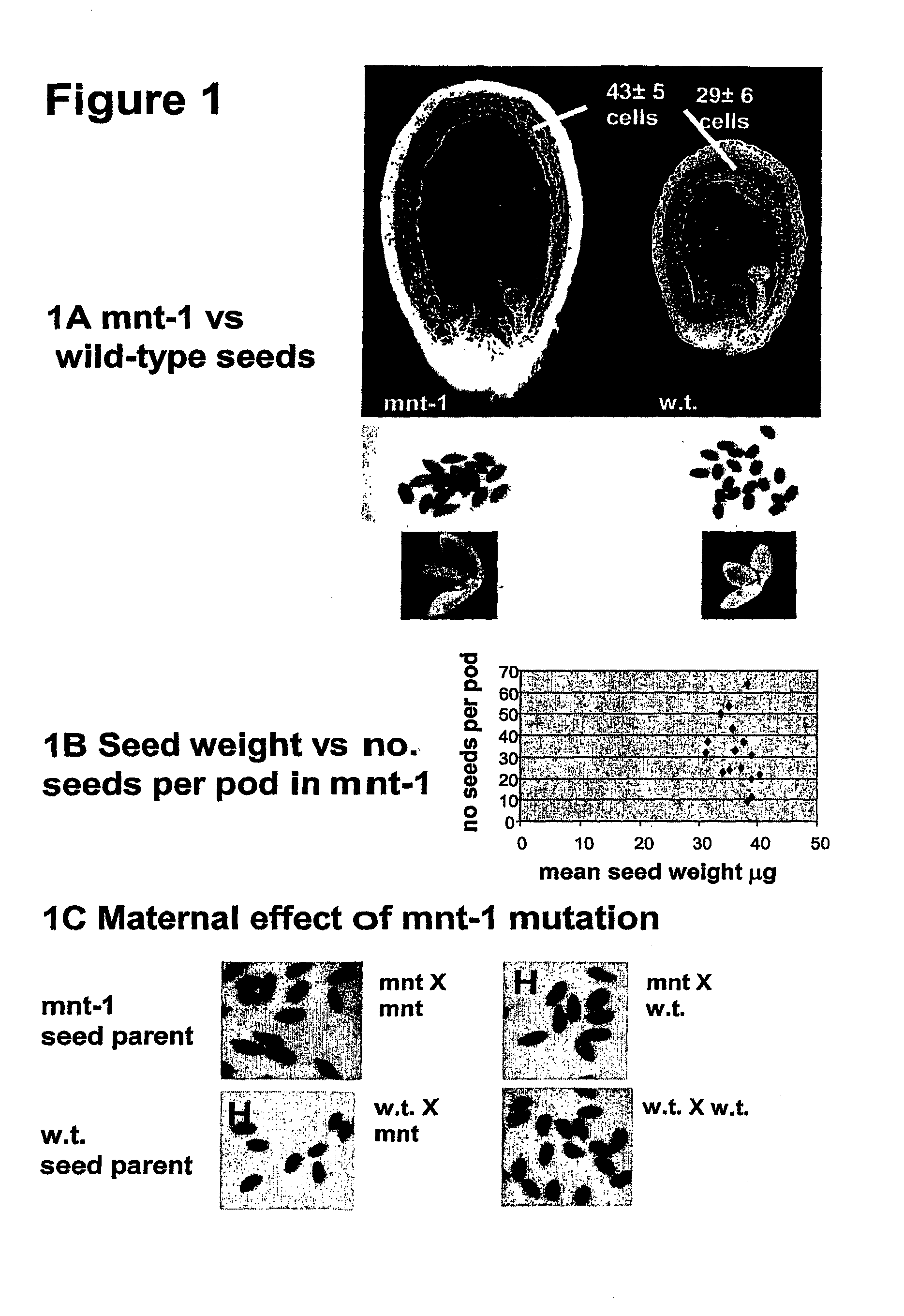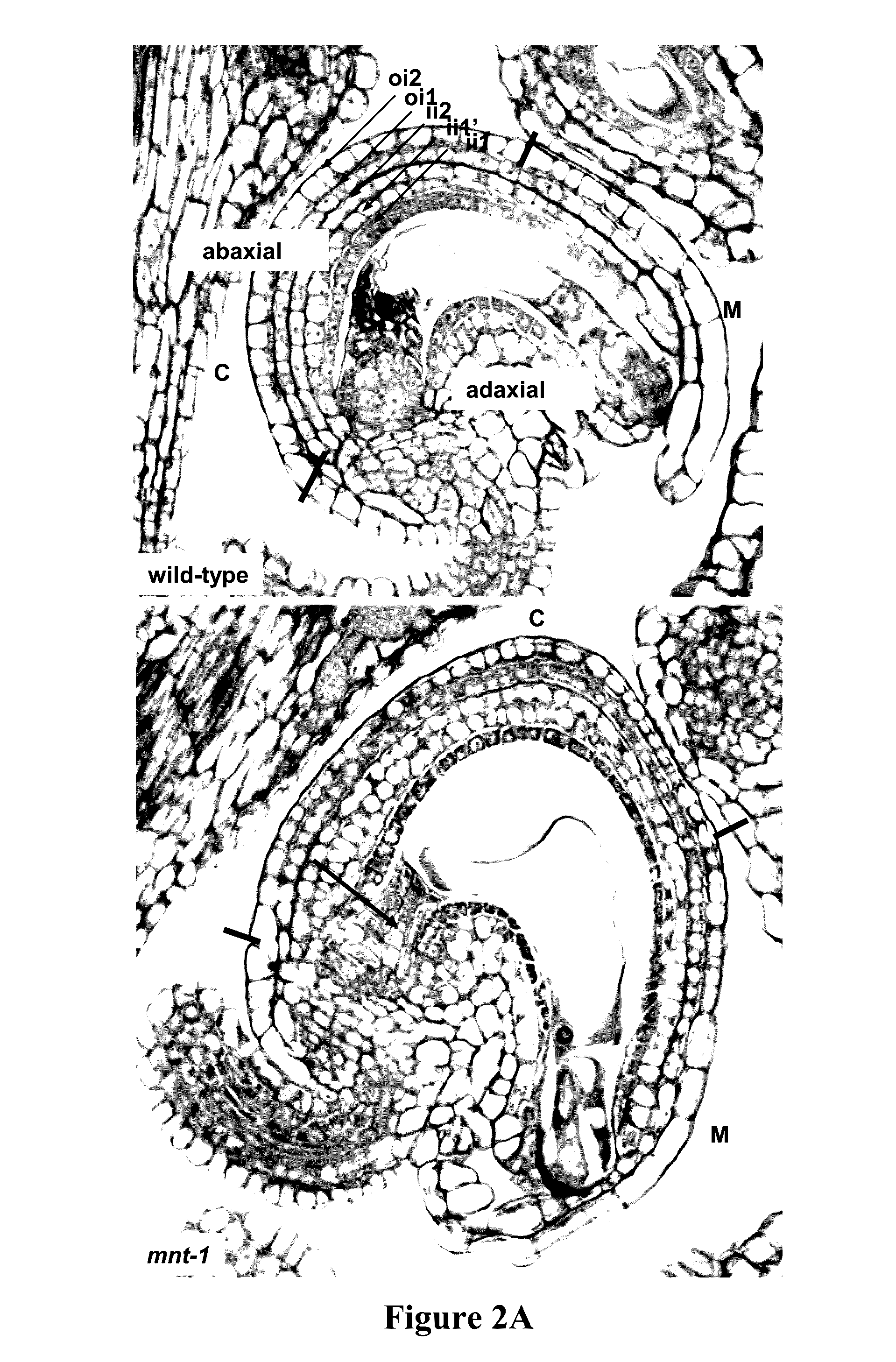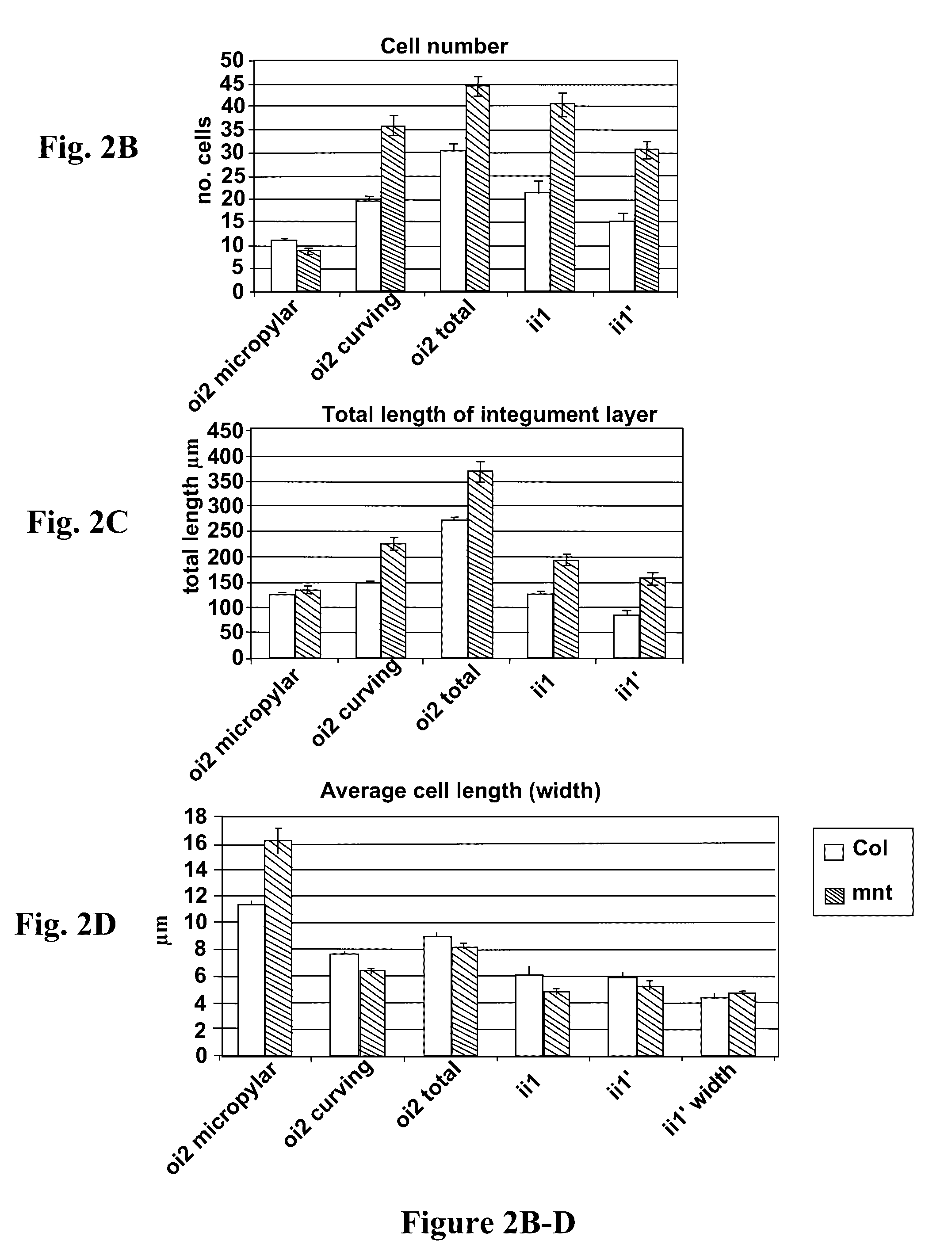Methods for modulating cell proliferation in the seed coat and/or integument
a cell proliferation and integument technology, applied in the field of methods for modulating cell proliferation in the seed coat and/or integument, can solve the problems of increasing the size of many plant organs, male sterility, and the inability to account for the final ler/cvi, etc., and achieves the effect of more space to grow
- Summary
- Abstract
- Description
- Claims
- Application Information
AI Technical Summary
Benefits of technology
Problems solved by technology
Method used
Image
Examples
example 1
Value of mnt Mutants in Understanding and Modifying Growth of Integuments / Seed Coat
[0140]The mnt mutant seed phenotype demonstrates that there is a correlation between the size of integuments before fertilization and the size of the mature seed in Arabidopsis thaliana (FIGS. 1, 2). Due to the similarities in seed structure among even distantly related groups of flowering plants, this leads to the expectation that modification to integument / seed coat size in other species, and certainly in members of the Brassicaceae such as Brassica napus, will also result in changes to seed size.
[0141]Our knowledge of the mnt mutant phenotype and MNT gene sequence can be exploited in other species through TILLING (‘Targeting induced local lesions in genomes’). In this reverse genetics technique, chemically mutagenized populations are screened for presence of a point mutation in a nucleic acid sequence of interest; this can be done as a high-throughput procedure and is applicable to many species (Ti...
example 2
Modifying Expression of MNT Orthologues in Other Species
[0143]Knowledge of the MNT sequence in Arabidopsis thaliana also allows us to search for orthologues in crop species as a necessary first step in targeted modification of the expression of the gene in these species.
[0144]By way of example, we amplified the putative Brassica napus orthologue (BnARF2) of MNT using primers (SEQ ID NO 7, 8) based on the MNT sequence and on publicly available Brassica oleracea sequence. The BnARF2 cDNA was amplified from total RNA isolated from seedlings of Brassica napus var. Westar. The BnARF2 cDNA from translational start to stop is shown in SEQ ID NO. 9 and is aligned with Arabidopsis thaliana MNT cDNA in FIG. 8. The BnARF2 predicted protein (SEQ ID NO. 10) has 85% identity to Arabidopsis thaliana MNT.
[0145]A family of ARFs has also been characterized in rice and one of these, OsARF2 (accession no. AB071293), is considered to be the orthologue of Arabidopsis thaliana ARF2 (Sato et al., 2001). FI...
example 3
Construction, Transformation, and Analysis of Reporter Vectors to Show where Integument / Seed Coat Promoters are Expressed in Arabidopsis thaliana
[0147]This is to test which promoters are suitable for driving integument / seed coat-specific or -preferred expression of nucleic acids such as MNT antisense or RNAi constructs, or other genes modifying cell proliferation.
[0148]Diagrams of the BJ60, BJ40, pFGC5941, pART7, and BJ36 vectors used in the cloning strategies described in this and following examples are shown in FIG. 10.
[0149]The cloning strategy is shown in FIG. 11.
3a Construction of Reporter Vectors
3a(i) TT8
[0150]A reporter vector based on the promoter of the TT8 gene (Nesi et al., 2000; At4g09820, accession no. AJ277509) is constructed as described below. A 1.7 kb fragment including the TT8 promoter is amplified by the polymerase chain reaction (PCR) from Arabidopsis thaliana genomic DNA 5′ to translational start of the TT8 gene using the primers TT8F and TT8R which introduce a...
PUM
 Login to View More
Login to View More Abstract
Description
Claims
Application Information
 Login to View More
Login to View More - R&D
- Intellectual Property
- Life Sciences
- Materials
- Tech Scout
- Unparalleled Data Quality
- Higher Quality Content
- 60% Fewer Hallucinations
Browse by: Latest US Patents, China's latest patents, Technical Efficacy Thesaurus, Application Domain, Technology Topic, Popular Technical Reports.
© 2025 PatSnap. All rights reserved.Legal|Privacy policy|Modern Slavery Act Transparency Statement|Sitemap|About US| Contact US: help@patsnap.com



